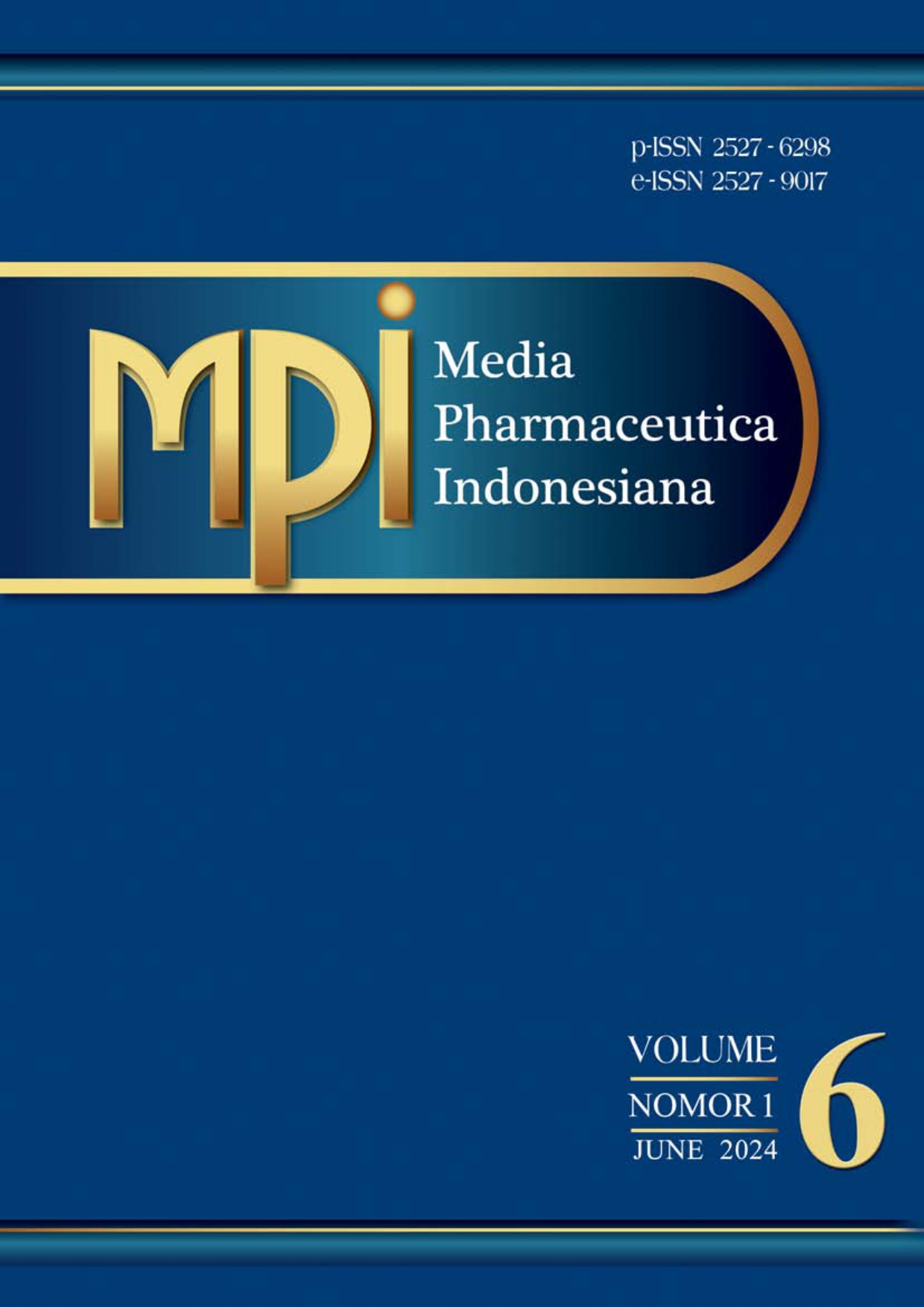Ketepatan Penggunaan Obat Oral Antidiabetik pada Pasien Diabetes Melitus Tipe 2 di Instalasi Rawat Inap
 Abstract Views:
1315 times
Abstract Views:
1315 times
 PDF Downloads:
913 times
PDF Downloads:
913 times
Abstract
Diabetes Melitus (DM) merupakan salah satu penyakit bersifat tidak menular yang masih menjadi permasalahan kesehatan secara global. Berbagai penelitian epidemiologi menunjukkan bahwa angka kejadian DM tipe 2 cenderung pada tren yang mengalami peningkatan di berbagai penjuru dunia. Indonesia adalah salah satu negara yang juga diperkirakan mengalami kenaikan jumlah pasien DM. Ketepatan pengobatan memiliki peranan yang sangat penting untuk mencegah ataupun menunda komplikasi makrovaskluar dan mikrovaskular, meningkatkan kualitas hidup dan juga harapan hidup. Penelitian ini bertujuan untuk mengevaluasi ketepatan penggunaan antidiabetik secara oral pada pasien DM tipe 2 di instalasi rawat inap salah satu rumah sakit yang terletak di Kabupaten Jember. Evaluasi ketepatan pengobatan dilakukan berdasarkan aspek tepat indikasi, tepat obat, tepat pasien dan dosis. Ketepatan pengobatan atau pengobatan rasional berdasarkan tepat indikasi, tepat obat, tepat pasien, dan tepat dosis masing-masing secara berurutan adalah 100%; 95,45%; 77,27%; dan 77,27%. Kesimpulan hasil akhir evaluasi menunjukkan bahwa ketepatan pengobatan adalah sebesar 59,09% dan ketidaktepatan pengobatan sebesar 40,91%.
Diabetes Mellitus (DM) is a global health problem. Various epidemiological studies show that the incidence of type 2 DM is increasing in various parts of the world. Indonesia is one of the countries that isexpected to experience an increase in the number of people with DM. Appropriate treatment has an important role to prevent or delay macrovascular and microvascular complications, improve quality of life and also life expectancy. This study aimed to evaluate the appropriateness of using oral antidiabetics in type 2 DM patients in a hospital at Jember Regency. Assessment of the treatment appropriateness was carried out based on the aspects of the right indication, right drug, right patient, and right dose. Appropriate or rational treatment based on the right indication, right drug, right patient, and right dose respectively was 100%; 95.45%; 77.27%; and 77.27%. The final results of the evaluation showed that the rationality of treatment was 59.09% and the irrationality of the treatment was 40.91%.
Downloads

This work is licensed under a Creative Commons Attribution-ShareAlike 4.0 International License.
Articles published in MPI are licensed under a Creative Commons Attribution-ShareAlike 4.0 International (CC BY-SA) license. You are free to copy, transform, or redistribute articles for any lawful purpose in any medium, provided you give appropriate credit to the original author(s) and MPI, link to the license, indicate if changes were made, and redistribute any derivative work under the same license.
Copyright on articles is retained by the respective author(s), without restrictions. A non-exclusive license is granted to MPI to publish the article and identify itself as its original publisher, along with the commercial right to include the article in a hardcopy issue for sale to libraries and individuals.
By publishing in MPI, authors grant any third party the right to use their article to the extent provided by the CC BY-SA license.

 DOI:
DOI:










